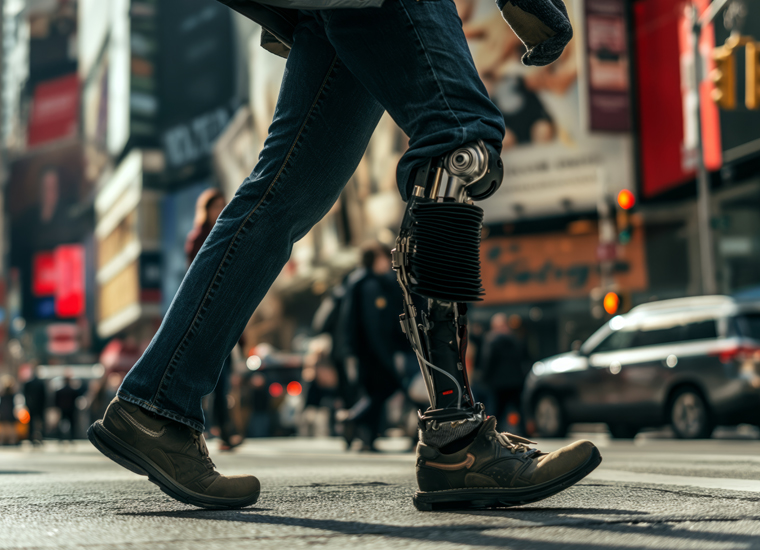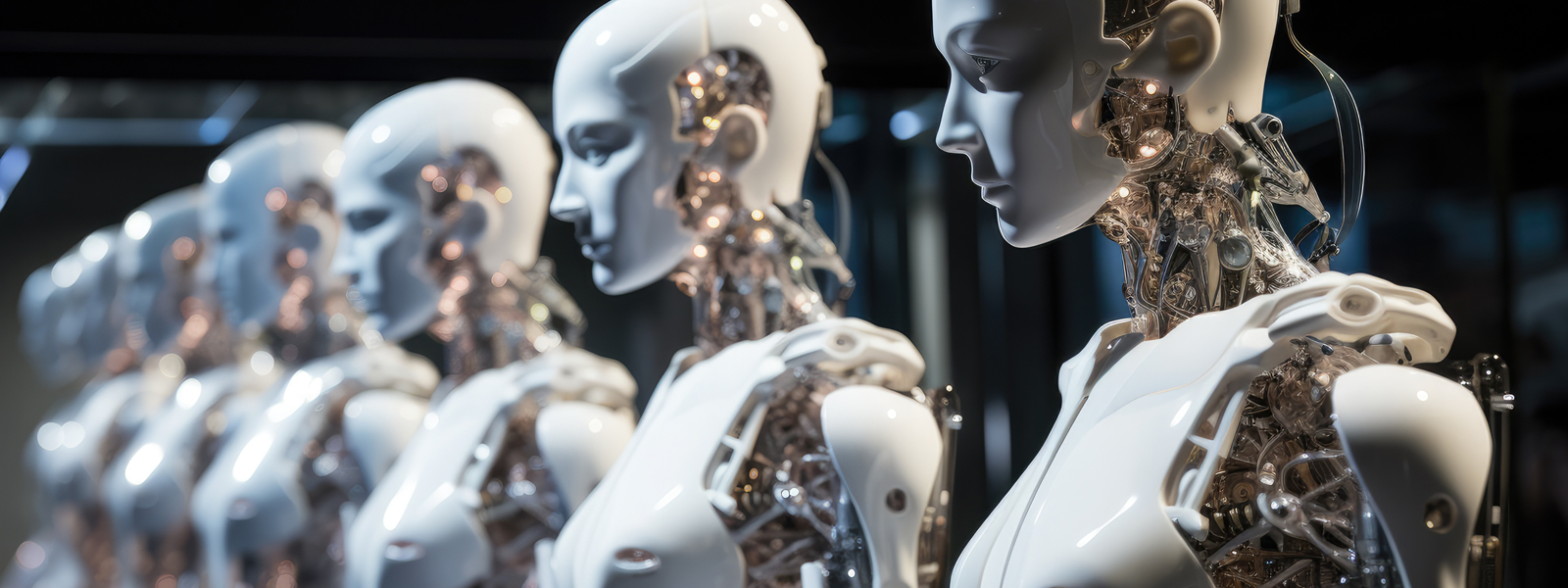AGP China Technology Report - Humanoid Robots
Table of Contents
Page Section
03 Technology Overview
07 Historical Development Timeline
10 Product Differentiation
15 China Technology Ecosystem
18 Sino-Foreign Collaboration
22 Common Applications In China
27 Government Policy Support
30 Impact On Market Incumbents
33 Final Conclusion
34 Appendices
1.1 Global Snapshot
Definition and Classification
Humanoid robots are autonomous machines designed to replicate human form and behavior, facilitating interaction within human-centric environments. They are primarily categorized into:
- Bipedal Humanoids: Robots that emulate human walking patterns, offering versatility in navigating varied terrains.
- Wheeled Humanoids: Robots equipped with wheels, optimized for stability and efficiency on flat surfaces.
Core Technologies
The development of humanoid robots integrates several advanced technologies:
- Actuators: Devices that convert energy into movement, enabling precise control of limbs and joints.
- Sensors: Instruments that gather data from the environment, including visual, auditory, and tactile inputs, essential for navigation and interaction.
- Artificial Intelligence (AI): Algorithms that process sensory data, enabling decision-making, learning, and adaptation to dynamic environments.
- Power Systems: Energy sources and management systems that ensure sustained operation and mobility.
Global Benchmarks
Leading humanoid robots exemplify the convergence of these technologies:
- Tesla's Optimus: Unveiled in 2022, Optimus is designed for tasks such as manufacturing and logistics, leveraging Tesla's advancements in AI and robotics.
- Boston Dynamics' Atlas: Known for its agility and balance, Atlas performs complex movements, including parkour, showcasing advanced control systems and mechanical design.
Market Dynamics
The global humanoid robot market is experiencing rapid growth:
- Market Size: Valued at USD 1.8 billion in 2023, it is projected to reach USD 13.8 billion by 2028, growing at a CAGR of 50.2% during the forecast period.
- Key Performance Indicators (KPIs):
- Degrees of Freedom (DOF): Ranging from 20 to over 40, allowing nuanced movements.
- Runtime: Varies based on tasks and battery capacity, with advancements extending operational periods.
- Payload Capacity: Depending on design, some humanoid robots can handle payloads up to 20 kg, suitable for industrial applications.
1.2 China Snapshot
Market Position and Capabilities
China is rapidly advancing in the humanoid robot sector:
- Market Share: In 2023, China accounted for approximately 4.9% of the global humanoid robot market, generating revenue of USD 64.6 million.
- Core Components: Chinese manufacturers are enhancing domestic production of critical components, such as harmonic drives and actuators, reducing reliance on imports and lowering costs.
Leading Firms and Deployments
Several Chinese companies are at the forefront:
- UBTECH Robotics: Known for its Walker series, UBTECH focuses on service robots for home and commercial use.
- Unitree Robotics: Specializes in quadruped robots with applications in logistics and inspection.
- Xiaomi: Entered the robotics market with CyberOne, a humanoid robot integrating AI and advanced sensors.
Product Pricing and Applications
Chinese humanoid robots are competitively priced:
- Affordability: Some models are available for as low as USD 12,000, making them accessible for various industries.
- Deployments: Applications include rehabilitation assistance in healthcare, automated logistics in warehouses, and customer service roles in retail.
National Policies and Industrial Targets
The Chinese government actively supports the robotics industry:
- Policy Initiatives: The Ministry of Industry and Information Technology (MIIT) released guiding opinions in 2023 to promote intelligent robot development.
- Industrial Goals: Targets include increasing the density of robots in manufacturing and expanding applications in service sectors.
Strategic Significance
Humanoid robots are integral to China's strategic objectives:
- New Productive Forces: Aligning with the concept of "new productive forces," humanoid robots contribute to industrial upgrading and innovation.
- Demographic Shifts: Addressing challenges from an aging population by providing solutions in elder care and healthcare.
- Industrial Upgrading: Enhancing automation in manufacturing aligns with national goals for smart factories and increased productivity.
Policy Relevance and Tech-Industry Integration
The integration of humanoid robots into various sectors underscores:
- Policy Support: Government subsidies and incentives encourage research, development, and adoption of humanoid robots.
- Industry Collaboration: Partnerships between tech companies and traditional industries facilitate the integration of robotics into existing workflows.
1.3 Market Size
Global Market Estimates
The humanoid robot market is poised for substantial growth:
- MarketsandMarkets (2023): Projects the market to grow from USD 1.8 billion in 2023 to USD 13.8 billion by 2028, at a CAGR of 50.2%.
- Fortune Business Insights (2023): Estimates growth from USD 2.43 billion in 2023 to USD 66.0 billion by 2032, with a CAGR of 45.5%.
- SNS Insider (2025): Forecasts an increase from USD 2.21 billion in 2023 to USD 76.97 billion by 2032, growing at a CAGR of 48.36%.
China-Specific Estimates
China's market is also expanding rapidly:
- Grand View Research (2023): Reports the Chinese humanoid robot market at USD 64.6 million in 2023, expected to reach USD 195.5 million by 2030, with a CAGR of 17.1%.
- Market Research Future (2025): Projects growth from USD 88.08 million in 2023 to USD 2.084 billion by 2035, at a CAGR of 28.48%.
Growth Scenarios
Potential growth trajectories include:
- High Growth: Accelerated adoption driven by technological breakthroughs and favorable policies.
- Medium Growth: Steady adoption with gradual integration into various sectors.
- Low Growth: Slower adoption due to technological challenges or economic constraints.
5-Year CAGR Estimates
- MarketsandMarkets (2023): 50.2% (2023–2028)
- Fortune Business Insights (2023): 45.5% (2023–2032)
- SNS Insider (2025): 48.36% (2024–2032)
Market Breakdown
Segmentation methods include:
- Application Domain:
- Healthcare: Rehabilitation and elder care.
- Manufacturing: Automation of assembly lines.
- Retail: Customer service and inventory management.
- Customer Segment:
- Industrial: Large-scale manufacturing and logistics.
- Service: Hospitality, healthcare, and retail sectors.
- Geography:
- Asia-Pacific: Rapid adoption in countries like China and Japan.
- North America: Technological innovation and early adoption.
- Europe: Emphasis on automation in manufacturing industries.
AGP Insights
Download PDF.
Your PDF report was sent successfully to your inbox!
Related Insights.











